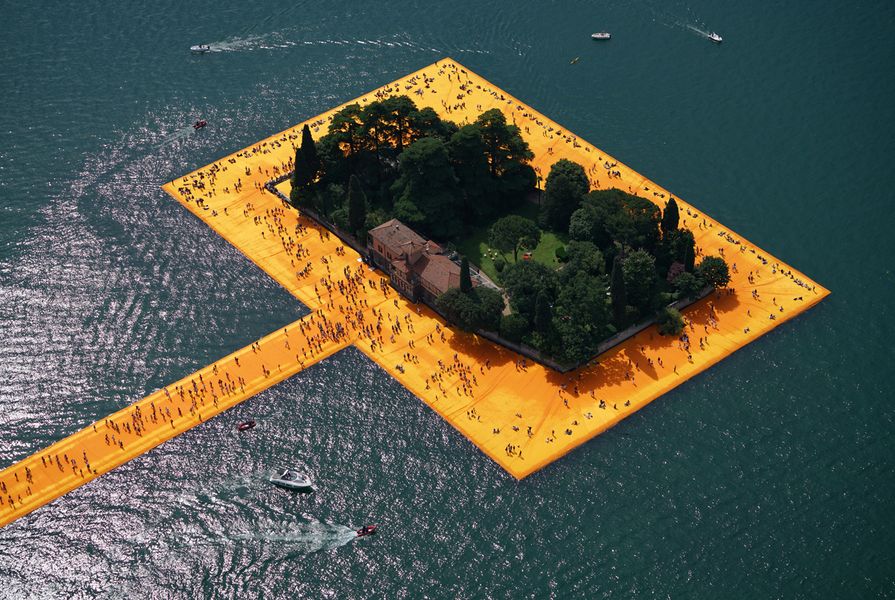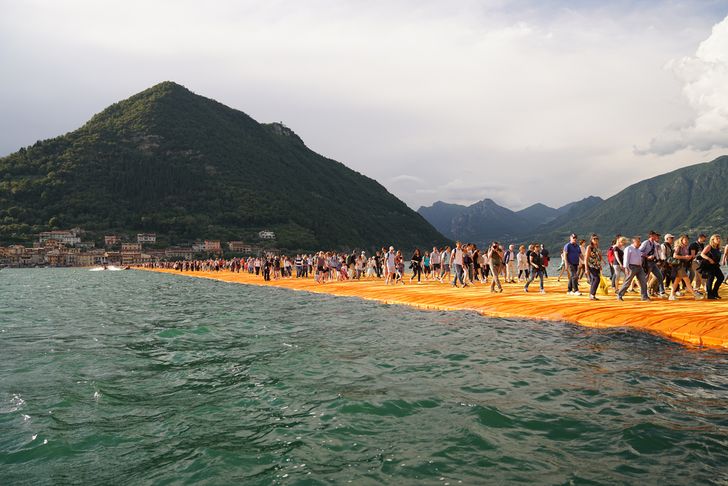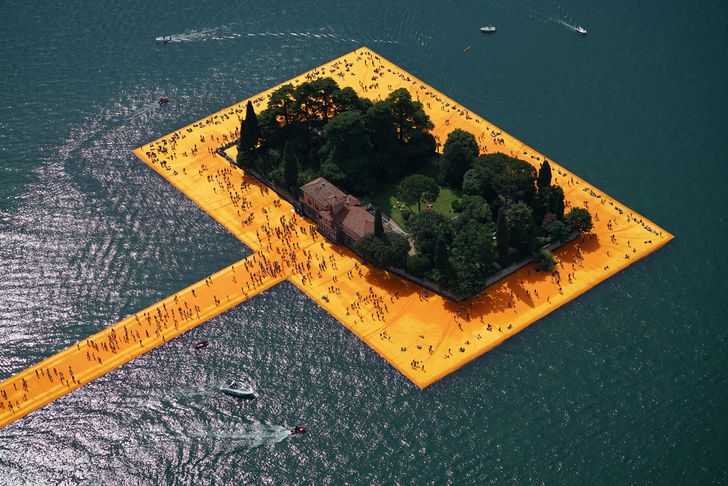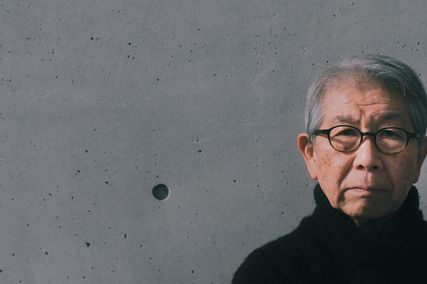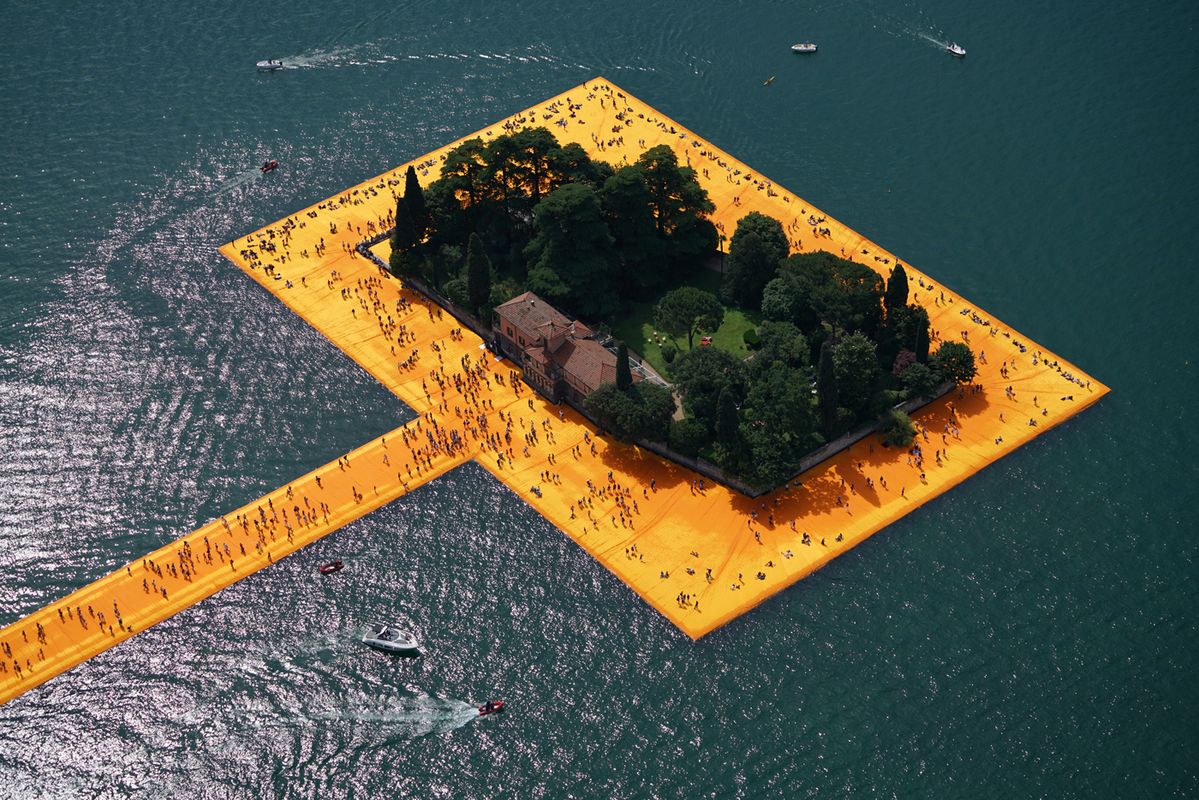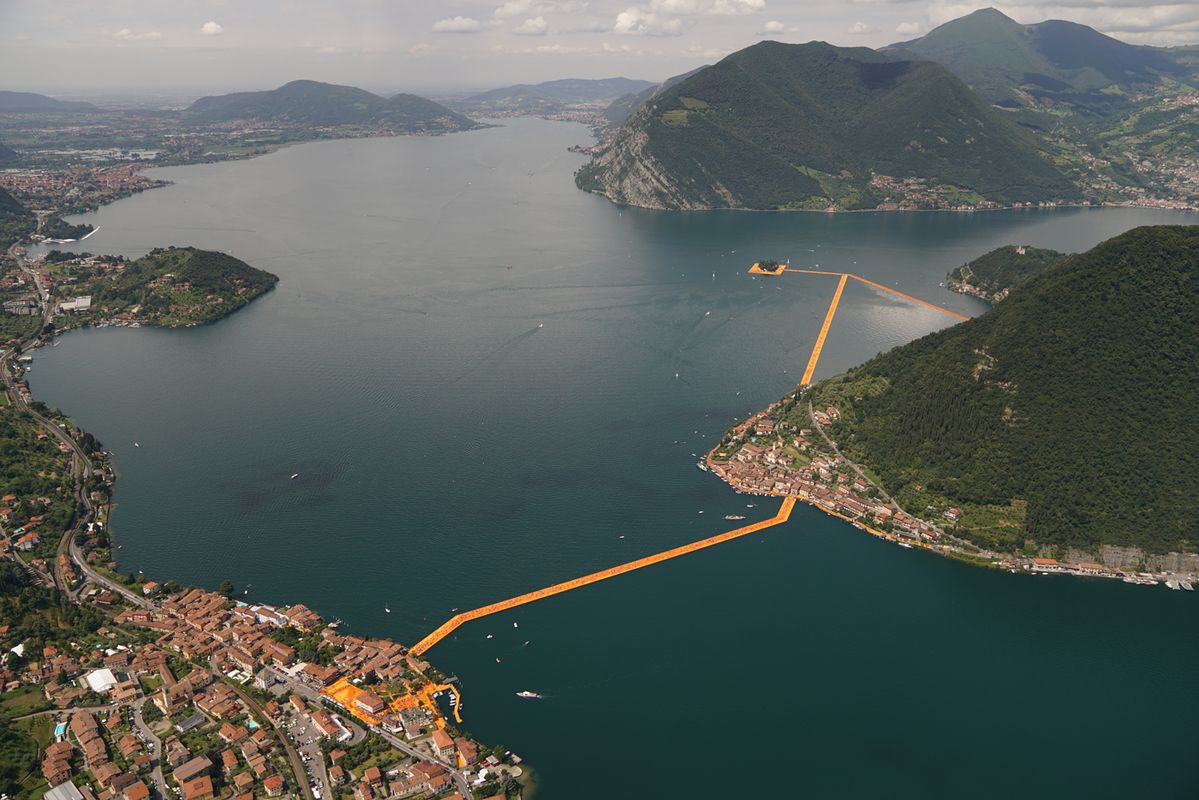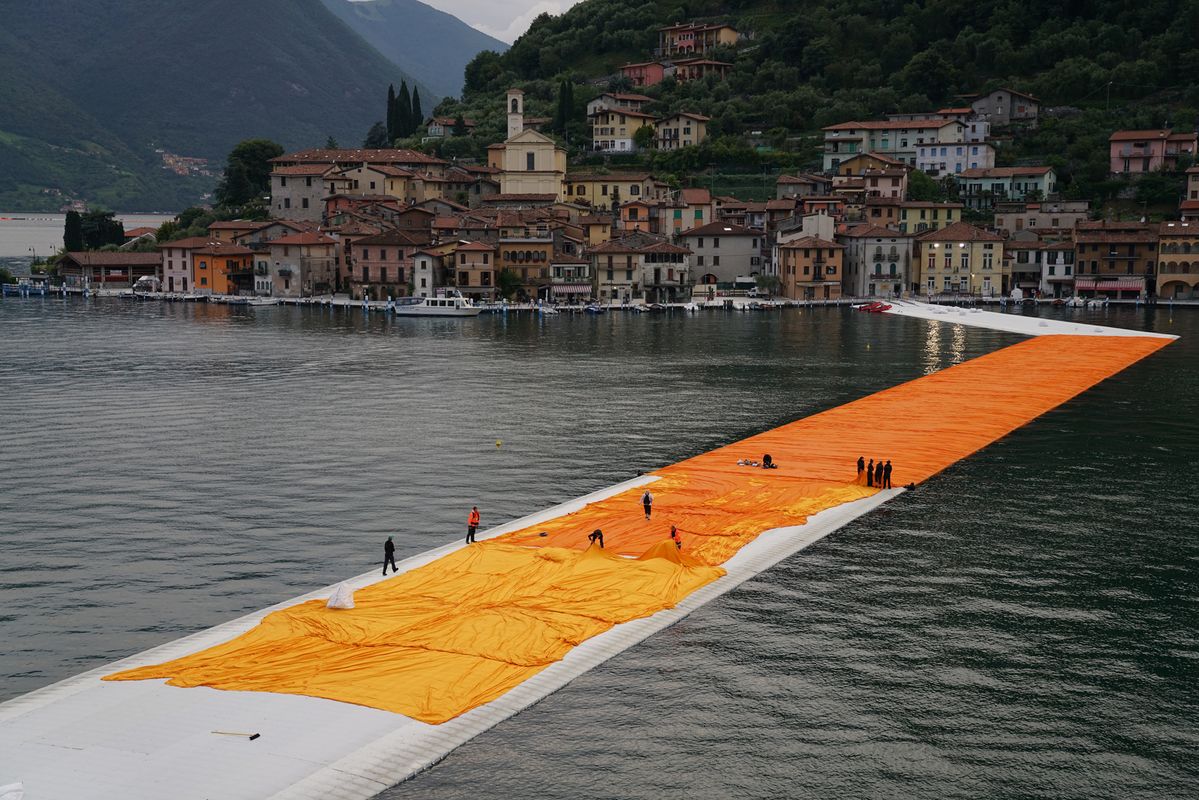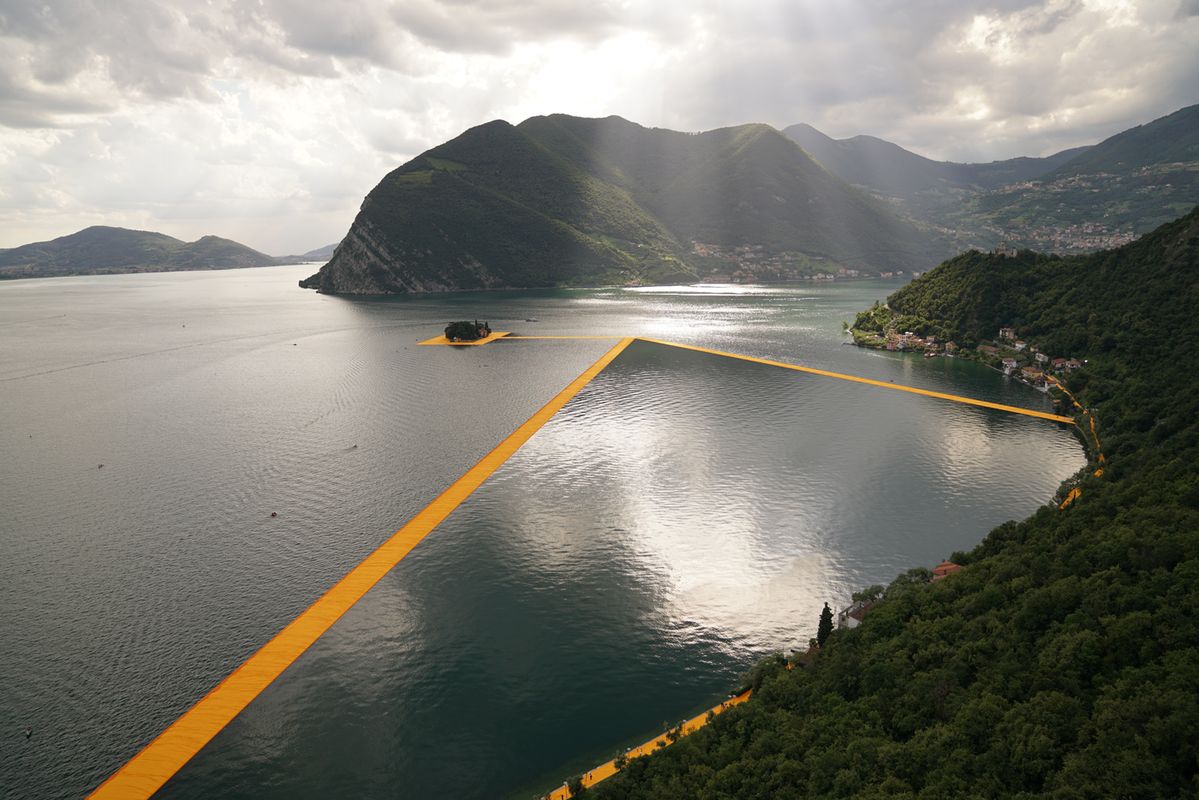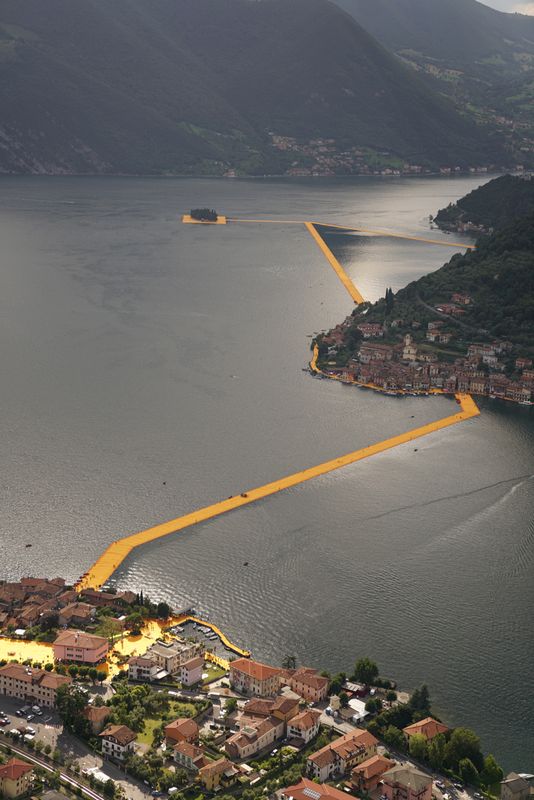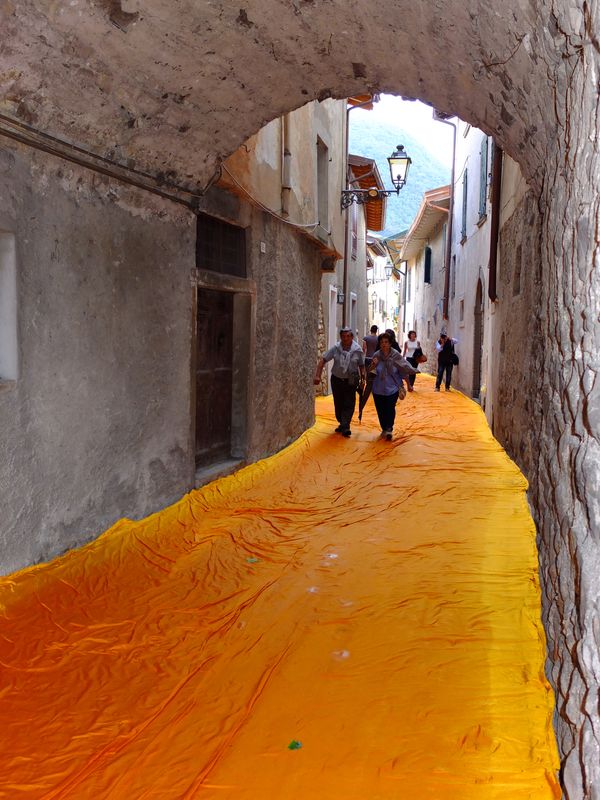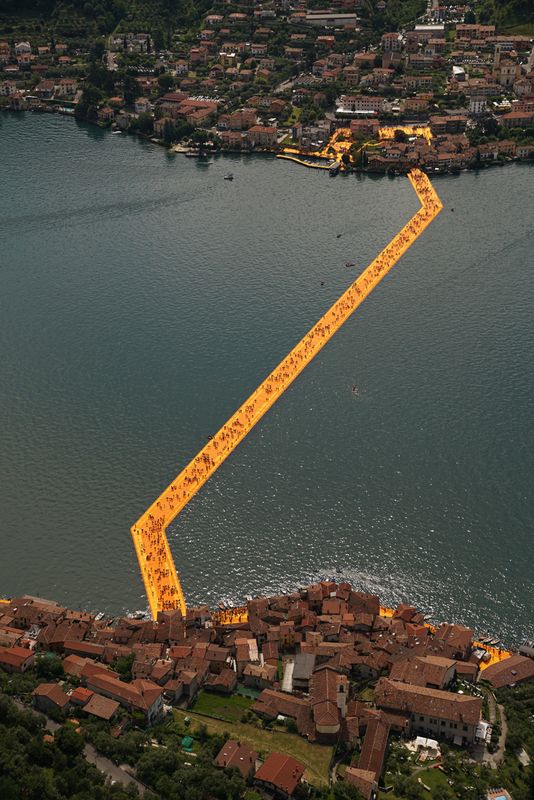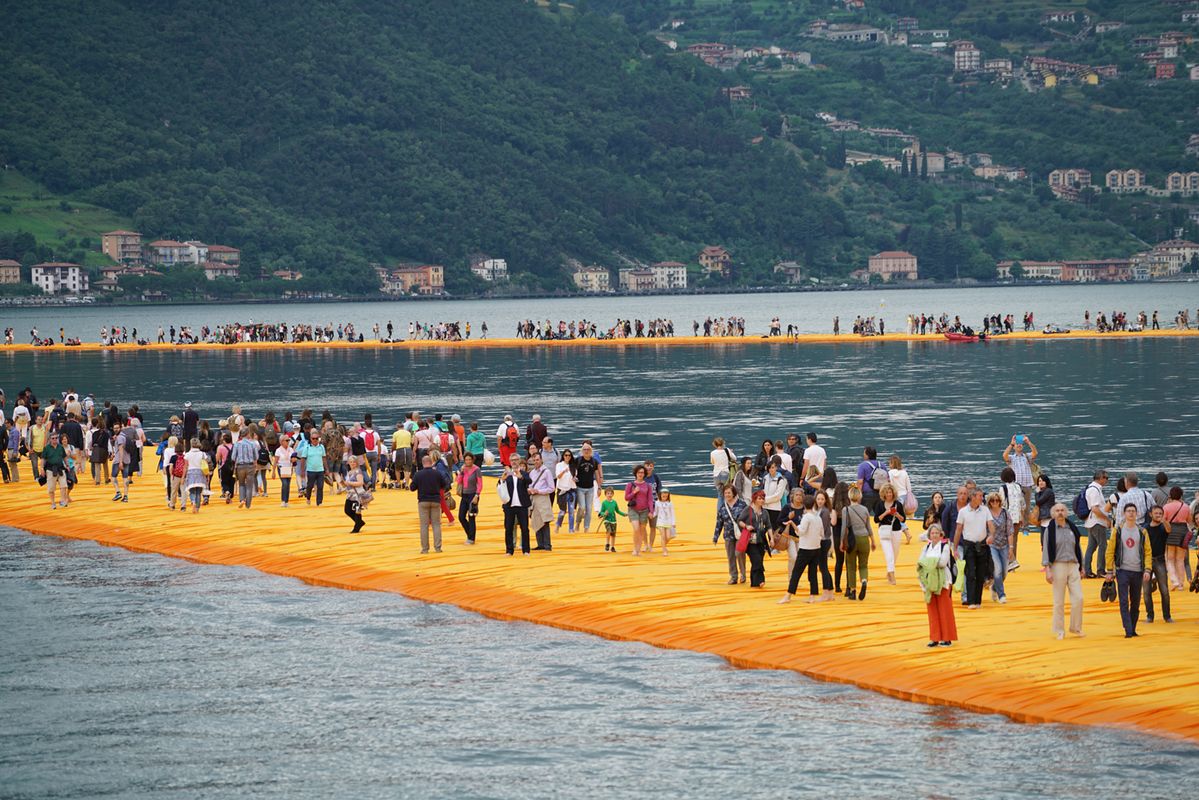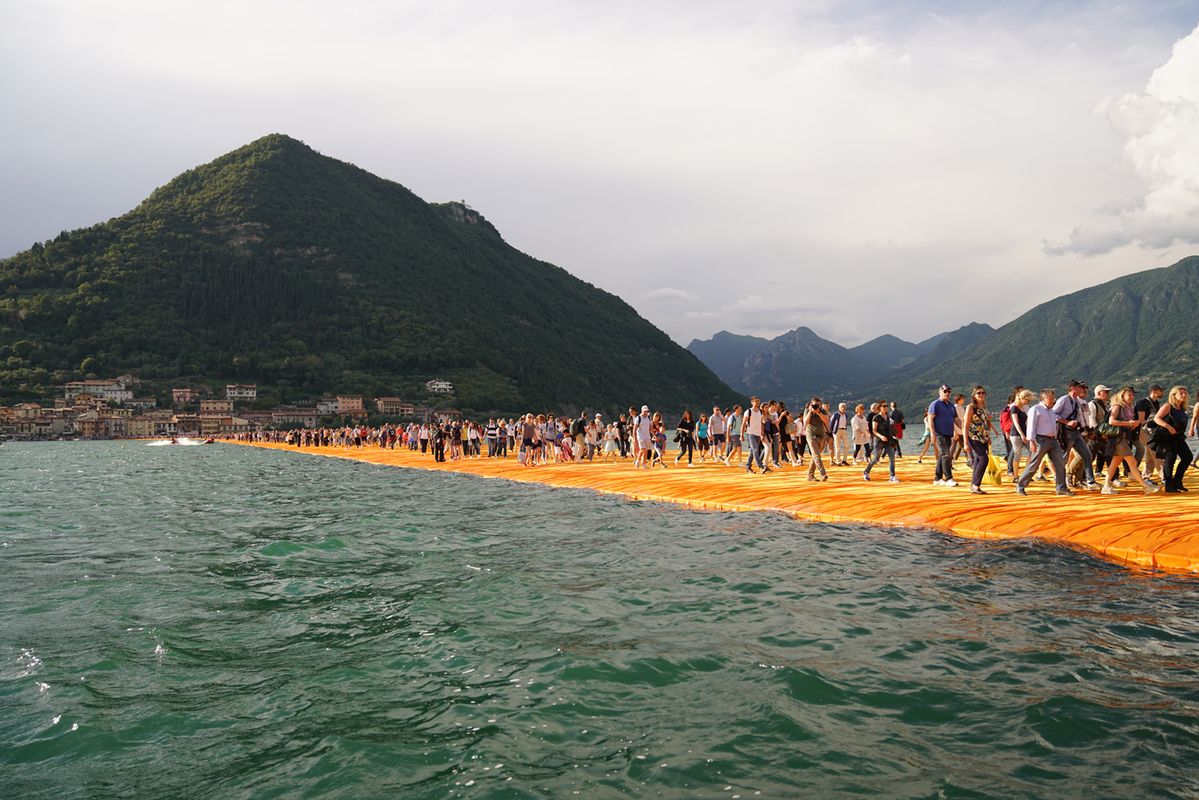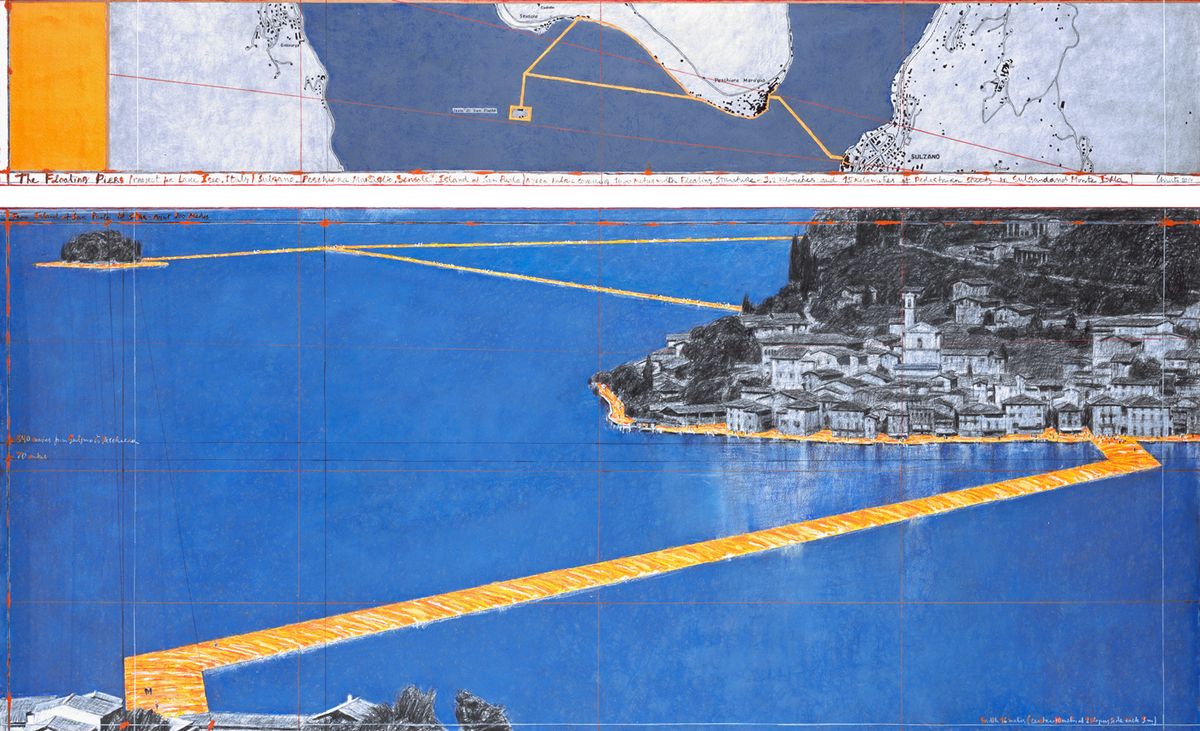An installation by Christo and Jeanne-Claude stretched across Italy’s picturesque Lake Iseo, north of Milan for two weeks in June 2016, more than forty years after its first conception. Floating blocks, wrapped in fabric and anchored to the lake bottom to form piers, connected the small town of Sulzano to two islands – Monte Isola and the island of San Paolo. It was free to visit and was reportedly financed by the sale of some of the artist’s work, costing more than US$16 million to create and taking many months to install.1 The three-kilometre-long, sixteen-metre-wide modular floating dock system was made of 220,000 high-density polyethylene cubes and covered in 100,000 square meters of saffron-coloured nylon fabric.
The simplicity of this idea, its abstract quality and impressive large scale have the trademark of the best land art. But, it’s not 1970 anymore. And in fact, this project was conceived originally in 1970 for installation in the Río de la Plata basin in South America, and since Tokyo Bay. Therein reveals two key issues with this work: its lack of transformative quality and that it could exist anywhere with the same effect. While art need not be purposeful, this installation could have – with a more critical edge – revealed “something” about our current world, or a different way of thinking or seeing something that is right under your nose (say as for the Wrapped Coast project in Little Bay, Sydney, 1968–69).
The Floating Piers by Christo and Jeanne-Claude, Lake Iseo, Italy, 2014-16.
Image: Wolfgang Volz © 2016 Christo
Unintentionally, Floating Piers did reveal a current obsession with “being there” to document that you were there. The majority of people visiting the installation spent time taking selfies, not really being there in the way that perhaps Christo would have liked and certainly not in the way the publicity images depicted, with a solo poetic figure wandering the piers.
“There were no tickets, no openings, no reservations and no owners,”2 Christo said of the project. There was, however, complete chaos on the anarchic ferry system, makeshift carparks, buses jam-packed with people, queues for hours, beer and sausage tents and lots of rubbish, in scenes that sometimes resembled what we might imagine a mass exodus/pilgrimage to be like. The irony at this moment in Europe was stunning, as only one or two hundred kilometres away this was happening for real. However, along with the incredible crowds, this isn’t really a critique that lies at the feet of the artists.
The Floating Piers by Christo and Jeanne-Claude, Lake Iseo, Italy, 2014-16.
Image: Wolfgang Volz © 2016 Christo
The main intention of the work was to create for visitors the feeling of walking on water. It was indeed beautiful to walk next to the water in such a picturesque place on a warm evening. However, you were forbidden to walk within about 1.5 metres of the edge – guards prevented visitors from walking on the tapering slope and rubber dinghies were on patrol in case you walked too close. The pier only moved slightly, so any sensation of floating was not felt strongly, not like on a stand-up paddleboard or even a small boat. The fabric covering the piers was a woven nylon, resembling fibreglass fabric, and quite impressive with no visible seams. The striking abstraction of the bright fabric across the blue lake was more successful when viewed from above than when walking on it. The shape of the pier, slightly convex and tapering down to the water, lifted about thirty centimetres above the water’s surface. While in many ways the installation was an enjoyable experience, it was not dissimilar to walking on a jetty or bridge supported by pontoons and did not provide a transported “floating on water” experience.
“I know these projects are totally irrational, totally useless,” Christo has said. “The world can live without them, nobody needs them, only me and Jeanne-Claude. She always made the point that they exist because we like to have them, and if others like them, it’s only a bonus.”3
But Christo, they aren’t useless, and we do need them. At the very least, such projects provoke us to reexamine the power of the aesthetic; at the most (if framed as such), they provoke an audience wider than has ever been possible to reflect on things that are right under our noses.
1, 3. Elisabetta Povoledo, “Christo’s Newest Project: Walking on Water,” The New York Times, 16 June 2016, nytimes.com/2016/06/17/arts/design/christos-newest-project-walking-on-water.html.
2. “The Floating Piers,” Christo and Jeanne-Claude website, christojeanneclaude.net/mobile/projects?p=the-floating-piers.

